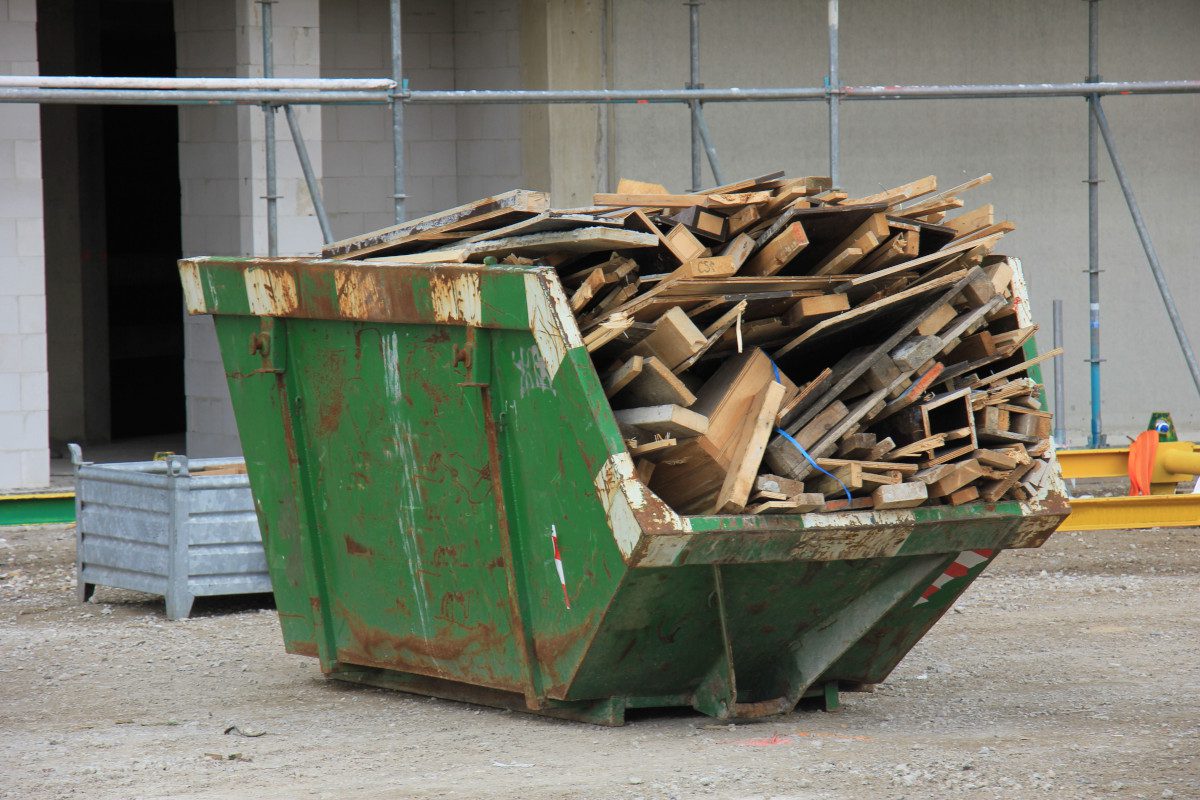
Statistics published on 27 September by the Scottish Environment Protection Agency (SEPA) reveal some of the impact of COVID-19 polcies on recycling. The figures provide detail on household waste collected across all local authorities during 2021, as well as waste landfilled and incinerated in Scotland in 2021.
Standout findings include:
- Scottish 2021 household waste figures reflect the reality of easing pandemic restrictions
- Scotland generated 2.48 million tonnes of household waste (0.45 tonnes per person) in 2021
- Overall household recycling rate was (42.7%) up slightly on 2020
- Recycling of household wood and construction wastes increased after lockdowns
- Carbon impact of Scotland’s waste increased by 53,000 tonnes CO2 equivalent (CO2e) in 2021, but is down 860,000 tonnes CO2e since 2011
Waste from all sources landfilled and incinerated in Scotland 2021
- Waste from all sources landfilled in Scotland in 2021 increased 22.4% largely due to more soils and sorting residues being landfilled
- Waste from all sources incinerated in Scotland in 2021 increased by 7.4%, also mainly due to an increase in sorting residues incinerated
The figures, when compared to 2020, reflect the impact the pandemic had on Scotland’s waste. An increase in both the amount of waste generated and amount recycled are likely due to a bounce back after lockdowns and other restrictions were lifted.
Increases in waste wood and construction waste are likely due to people restarting of home improvement projects.
SCOTTISH HOUSEHOLD WASTE STATISTICS 2021
Scottish households generated the equivalent of 0.45 tonnes of waste per person in 2021, with 0.19 tonnes recycled, 0.12 tonnes sent to landfill and 0.14 tonnes diverted through other means, such as incineration.
The total amount of household waste generated was 2.48 million tonnes in 2021, an increase of 55,000 tonnes (2.3%) from 2020. Of this, 1.06 million tonnes (42.7%) was recycled, a 0.7 percentage point increase from 2020.
Data for every one of Scotland’s 32 local authorities are available on SEPA’s website.
Carbon impact of Scottish household waste
The Scottish carbon metric measures the whole-life impact of resources. A measure of national performance, the metric takes a holistic view, from resource extraction and manufacturing emissions, through to waste management emissions. This is measured in carbon dioxide equivalent (CO2e).
The carbon impact of Scottish household waste generated and managed in 2021 was 5.9 million tonnes of carbon dioxide equivalent, which equates to 1.08 tonnes of CO2e per person. This was an increase of 0.9% (53,000 tonnes CO2e) from 2020, largely due to more waste being generated.
While the amount of waste generated by Scottish households in 2021 was 4.7% below 2011 levels, the carbon impact of Scottish household waste generated and managed was 12.8% (0.86 million tonnes CO2e) below the 2011 level.
Amount of recyclables collected at the kerbside continues to rise
The amount of segregated recyclate collected via kerbside collections in 2021 was 721,000 tonnes, an increase of 5,400 tonnes (0.7%) from 2020. The change was more pronounced for rural authorities (up 4,700 tonnes, 1.6%) compared to urban authorities (up 600 tonnes, 0.1%).
These increases continue the overall trend since 2013 when 578,096 tonnes was collected, an overall increase of 24.8%.
Less than half as much waste sent to landfill as in 2011
2021 was the first time in 10 years there was no decrease in household waste sent to landfill – though the amount was more than half what was disposed of in 2011.
The increase of 4,000 tonnes to 664,000 tonnes, was a 0.6% increase from 2020, but 54.4% less than 2011. While there was an increase in the amount of waste landfilled, there was a slight decrease in the percentage sent to landfill (down 0.4 percentage points).
Waste recycled and diverted from landfill
The 2021, Scottish household waste recycling rate was 42.7%, up 0.7 percentage points from 2020. The amount of household waste recycled between in 2020 and 2021 increased by 41,000 tonnes (4.0%) to 1.06 million tonnes.
The majority was recycled or reused (677,000 tonnes, 63.8%), composting contributing the remaining 384,000 (36.2%).
The increase in waste recycled between 2020 and 2021 is likely due to a bounce back from the impact of the COVID-19 lockdown and other restrictions in 2020, which resulted in the amount of waste recycled and the waste recycling rate falling to the lowest levels since 2013.
The amount of household waste managed by other diversion from landfill was 758,000 tonnes, an increase of 10,000 tonnes (1.4%) from 2020. Most was managed by incineration (612,000 tonnes, 80.7%), which was also the case in 2020, although the proportion of the total was higher (81.9%) in 2020.
Wood and construction wastes largest changes in materials recycled
Of the seven material categories that were the most recycled or reused in 2021, wood wastes showed the largest change compared with 2020 (increase of 10,000 tonnes, 14.7%). These were followed by construction and soils waste (increase of 8,000 tonnes, 9.0%).
The increase in the recycling or reuse of these two wastes in 2021 follows a 21.5% reduction for each in 2020. This decrease is likely due in part to a reduction in the number and scale of home improvement projects, resulting from pandemic factors, such as lockdown and the inability to source raw materials.
WASTE FROM ALL SOURCES LANDFILLED AND INCINERATED IN SCOTLAND 2021
Also published today were statistics providing the details of waste landfilled and incinerated in Scotland for calendar year 2021. The corresponding data set for all waste generated and recycled in Scotland during 2021 will be published in March 2023.
Total waste landfilled in Scotland
The total quantity of waste landfilled in Scotland in 2021 was 3.2 million tonnes, an increase of 587,000 tonnes (22.4%) from 2020.
The increase was largely due to more soils (increased 297,000 tonnes, 35.7%) and sorting residues (increased 221,000 tonnes, 32.1%) being landfilled from 2020. These increases are likely due to a resumption of construction activity in Scotland following extended lockdowns and other pandemic restrictions in the previous reporting period.
The waste landfilled in Scotland statistics are available on SEPA’s website.
Waste incinerated in Scotland
The total quantity of waste incinerated in Scotland in 2021 was 1.35 million tonnes, an increase of 93,000 tonnes (7.4%) from 2020. Sorting residues made up a third (33.3%) of all waste incinerated (450,000 tonnes, up 74,000 tonnes – 19.5%). This increase is likely to due to a resumption of construction activity in Scotland after pandemic restrictions and an increase in treatment of residual waste, which was delayed in 2020 due to pandemic lockdowns at local authority recycling centres.
Hazardous waste comprised 0.2% (2,000 tonnes) of waste incinerated in 2021 and was solely composed of hazardous health care and biological wastes.
The waste incinerated in Scotland statistics are available on SEPA’s website.
Gary Walker, Waste and Landfill Tax Manager at SEPA, said:
“The latest official statistics reflect the reality of the easing of COVID pandemic restrictions, as household waste recycling centres re-opened. While Scotland has seen a reduction in the amount of waste generated in the last decade, the latest figures are a timely reminder of the need for a continued focus on recycling by us all.
“Recycling is a simple daily step everyone can take to build a more sustainable Scotland. We can all make choices to reduce the amount of waste we generate and keep products and materials in use for as long as possible through re-use and recycling to help Scotland tackle the climate emergency.”
Commenting on the figures, Iain Gulland, Chief Executive, Zero Waste Scotland, said:
“It is encouraging to see recycling rates recover slightly from 2020, when they were significantly affected by the Covid-19 pandemic. Recycling is a fantastic force for good, helping to keep materials in use for longer and evolve a more circular economy for Scotland.
“The latest data makes clear however that, as a society, we need to do more to curb our consumption. Around 80% of Scotland’s carbon footprint comes from the products and materials we make, use, and throw away – often before the end of their useable life. It’s a moral and environmental imperative that we change that.
“We need to transform our throwaway culture to one in which products and materials are valued and made to last if we’re serious about tackling climate change.”






